John Fitch's Chevrolet Corvair Obsession: The Fitch Phoenix, the Fitch Sprint and What Might Have Been
John Fitch is a name familiar to any fan of the golden years of automobile racing. In addition to being one of the pioneering American pilots to succeed on the European circuit (and a World War II fighter pilot), his engineering background made him a relentless advocate for safety, with inventions such as the impact absorbent barrel, "Fitch Barriers," now prevalent not just at the track but also on highways around the world.
Less known, however, is Fitch's other obsession: the Chevrolet Corvair. Although the Corvair was vilified in the media after an image-assassination campaign from critic Ralph Nader in his book 'Unsafe At Any Speed,' the vehicle was technologically advanced for its time.
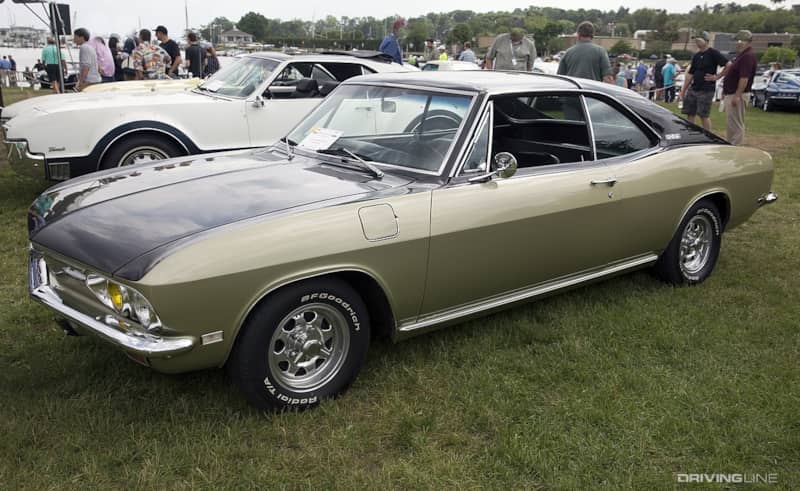
Fitch's Corvair fascination would lead him to create more than one unique version of Chevy's rear-engine sportster. It would also provide a glimpse at an even brighter legacy that might have been had outside forces not intervened.
A European Sports Car From Detroit
The Fitch Sprint Corvair was Fitch's first true foray into the automotive market in the early 1960s. Impressed by the potential of Chevy's unique and affordable coupe in Corsa trim, he would develop three different stages of performance upgrades for the car. These were available either installed directly at Fitch's headquarters in Falls Village, Connecticut (a process that took only one day's work), or ordered individually by mail. Chevrolet would even deliver the car to Fitch right from the showroom floor, if the customer so desired.
Rather than simply boost power and hand over the keys, as was common during the era, Fitch would instead take a holistic approach to the car's overall drivability. These included updates to the shift linkage, the steering ratio, shortening the front control arms, adding adjustable rear shocks, improving the alignment front and rear and installing lightweight 13-inch wheels. Power was bumped from 140 to 155 horses from its horizontally-opposed, air-cooled six-cylinder engine, thanks to new carburetors, individual air filters and a timing advance.
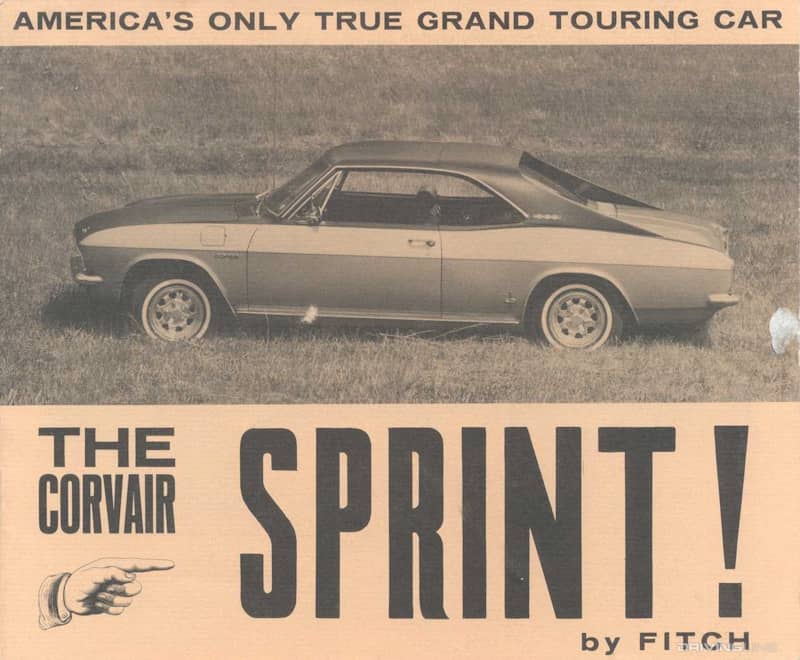
A half-roof treatment made of fiberglass instantly identified the Sprint Corvair from its factory brethren, and a number of interior upgrades rounded out the package. Fitch was also happy to build cars to an owner's specs for the utmost in personalization.
Each of these updates were individually inexpensive, but cumulatively changed the character of the car quite a bit. As a result, Fitch was able to sell his Sprint for a fraction of what a European sports car from Porsche or Jaguar would cost.
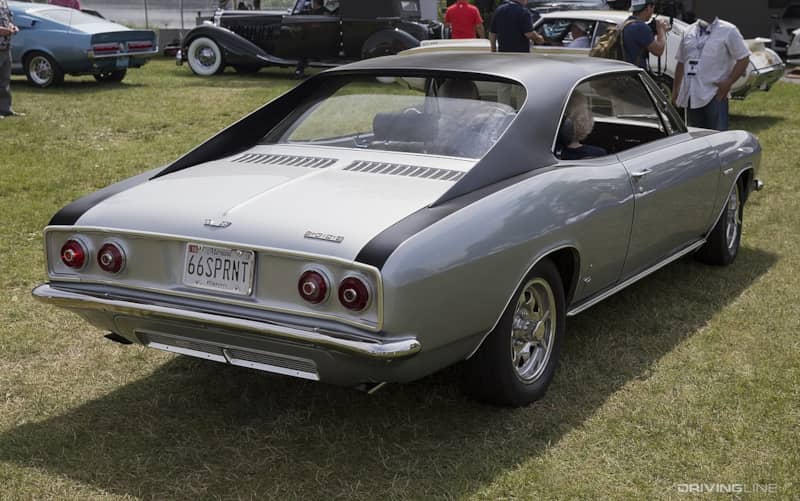
The cars would sell until well after Chevrolet stopped building new Corvairs in 1969, with Fitch eventually selling his stake in the business (along with his remaining cache of parts and tooling) to Solar Automotive, which would keep the idea of a performance Corvair alive. Roughly 1,200 Fitch Sprints were sold over the course of a decade, including both in-house and mail-order kit models.
Phoenix Rising
John Fitch's second Corvair passion was far more ambitious, if eventually less successful. Sensing that the Corsa chassis could be persuaded to offer Corvette-killing performance and curb appeal if it were stripped of its dowdy sheet metal and given a full makeover, he began to work on the Phoenix. This prototype was developed in partnership with Fitch's neighbor and frequent racing collaborator Colby Whitmore, a man known more for his doodles as a professional cartoonist in the Saturday Evening Post than his design acumen.
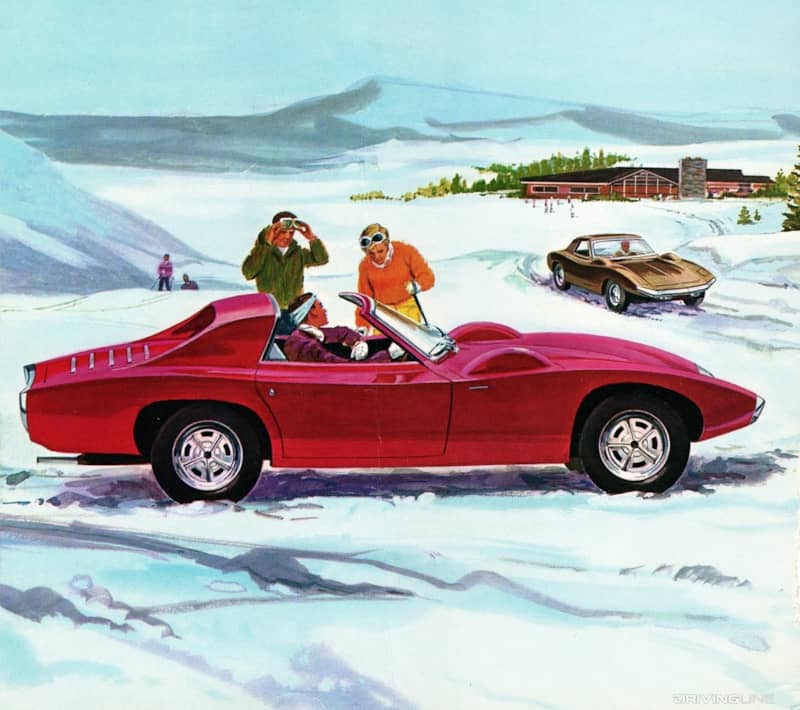
Still, given a new canvas of steel, Whitmore proved to be an able apprentice, designing swooping body work that was made real by Italian coach builder Intermecannica. Those bulges visible at the front, just behind the wheel openings? They conceal the car's spare tires (one for each of the car's staggered front/rear sizes), a nod to the grand touring ideals Fitch wanted the Phoenix to embody.
The body was mated to a version of the 1965 Chevrolet Corvair Corsa's frame that had seen its wheelbase whittled down by just over a foot for spicier proportions. A 170hp version of the Corsa's motor—fed by quad Weber carbs—was installed out back, while disc brakes helped slow down the car from its top speed of 130 miles per hour. With its lightweight construction leading the way (roughly equivalent to a first-generation Miata), the Phoenix could hit 60-mph in a scant 7.5 seconds, which was muscle car-adjacent at the time it was revealed to the public in 1966.
Killed By Progress
Despite its strong styling and the sound business acumen of Fitch and Whitmore, the Phoenix was a victim of circumstances far beyond its control. American safety regulations aimed at providing oversight to the laissez-faire automotive industry would make it impossible for Fitch to produce 500 examples of the car as planned and still somehow turn a profit. Roughly 100 orders had been placed for the car, but other than the single proof-of-concept (which still exists to this day and which most recently sold for a quarter million dollars at auction in 2014), no others were built.
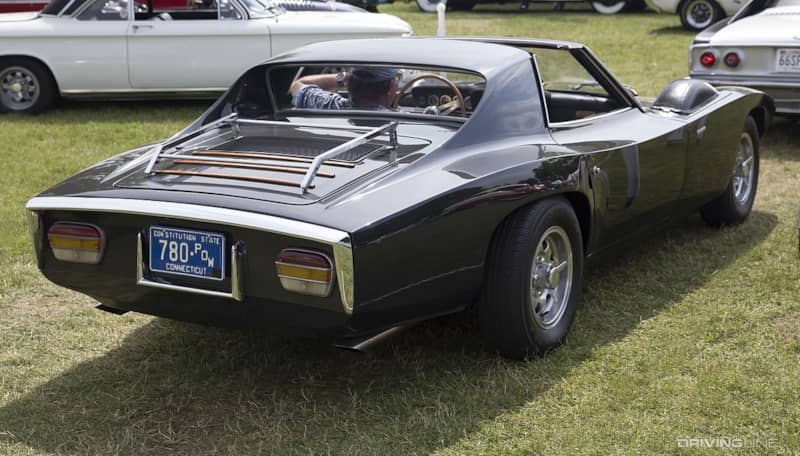
To his credit, John Fitch's can-do spirit would soldier forward well past the 1960s, as he continued to advocate for automotive safety while simultaneously managing the Lime Rock race track not far from his Connecticut home. He would also contribute inventions in fields as far ranging as medical devices, energy management and vehicle suspension systems. Although he died in 2012, he left behind a multi-storied career and a passion for life and automobiles that few could match.
Curious about other Euro-flavor cars with a distinct Detroit feel? Check out these cross-Atlantic muscle machines with pure-bred American hearts.







